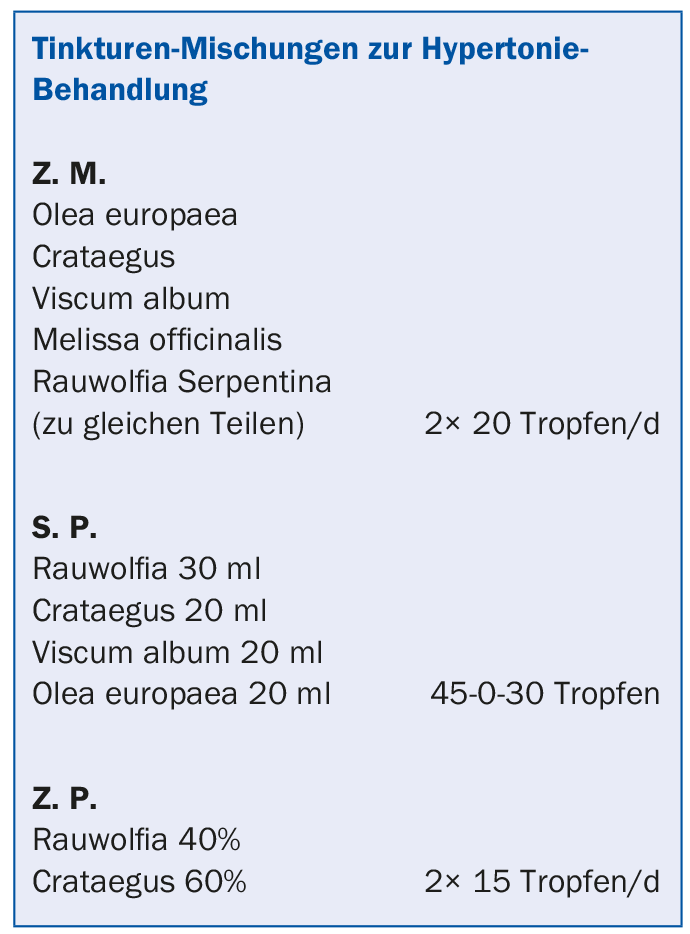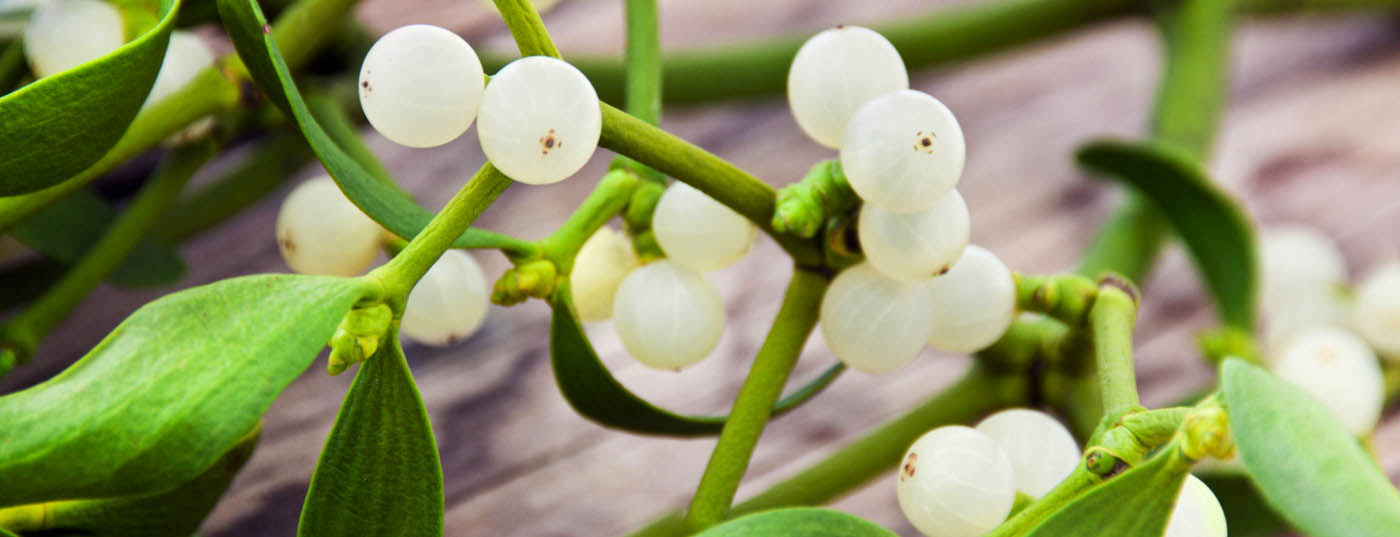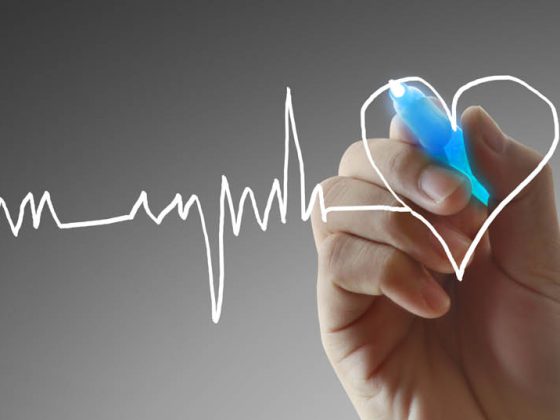The following article deals with the opinion that only harmless complaints can be treated with phytotherapy and that synthetic drugs are needed for “real” diseases. Experienced doctors can successfully treat hypertension in many cases with appropriate tincture mixtures.
Systolic and diastolic blood pressure can only be measured since the transition from the 19. into 20th century objectively measure. In 1896, the physician Riva-Rocchi in Pavia used a rubber cuff on the upper arm for the first time and was able to measure blood pressure with the help of a mercury manometer. In 1903, this new method of measurement was refined by Korotkoff, who introduced auscultation of the tapping sounds.
Today, blood pressure measurement is part of the daily routine in medical practice worldwide and, since the introduction of electric blood pressure monitors, also in countless households.

Folk medicine
As with all ailments, there are folk medicine recipes for high blood pressure. Herbal priest Johannes Künzle writes in his “Grosses Kräuterheilbuch” from 1945: “Too high blood pressure makes irritable, dizzy, sleepless… Among the plants it is especially mistletoe (Viscum album), Saint Benedict’s herb (clove root = Geum urbanum), lemon balm (Melissa officinalis), peppermint (Mentha piperita), forest orchid (Stachys sybatica), silurium (silverroot = Dryas octopetala) that lower blood pressure and strengthen the heart.”
Studies
In recent years, few scientific studies have been published that addressed the phytotherapeutic treatment of hypertension [1–3].
The study by Xiong et al. dealt with TCM herbs and showed an unclear result. Brasil’s team studied in vivo antihypertensive properties of papaya and found positive evidence. The study by Rohner et al. is a meta-analysis that examines the effects of garlic. He evaluated nine studies with a total of 482 patients and concluded from the results that there was some evidence, but not strong, for the antihypertensive effect of garlic (Allium sativum).
Experience
Physicians with experience in phytotherapy always use herbal preparations in their practices for the treatment of hypertension. The focus of interest here is:
- Indian snakeroot (Rauwolfia serpentina)
- Mistletoe (Viscum album)
- Garlic (Allium sativum)
- Olive tree leaves (Olea europeae)
- Hawthorn (Crataegus species)
- Heartwort (Leonurus cardiaca)
These medicinal plants are very often used in combinations, the dosages are given in the practical experience reports listed below.
Indian snake root
The medicinal plant, already described in the Vedas, was first described as effective against hypertension in an Indian publication in 1931 and from 1946 also in Western literature. The alkaloid reserpine isolated from Rauwolfia serpentina (Fig. 1) was part of the anthypertensive standard until the 1980s. The German Commission E dedicated a monograph to the plant and in it certified its antihypertensive effect. Because of the relatively strong effect of Rauwolfia
should be used for antihypertensive treatment only adjusted tincture. A tincture adjusted to 2-3 mg/ml total alkaloids contains 0.1 mg reserpine per ten drops. The maximum daily dose is 3× 20 drops/d.

Mistletoe
Mistletoe, which is used by anthroposophists to treat tumors, is also used to treat high and low blood pressure. Phenolic compounds (flavonoids, lignans, phenylpropanes) are thought to be responsible.
Garlic
In recent years, garlic is no longer commonly used for hypertension in phytotherapeutically oriented medical practices, but it is increasingly used to regulate cholesterol levels.
The odorless sulfur-containing allin produces the decomposition product allicin, which has the characteristic pungent taste and odor. It and other ingredients of garlic are said to have antibacterial, antiatherogenic and antihypertensive properties.
Olive leaves
The fruits of the tree Olea europaea, which grows in Mediterranean areas, are used to obtain olive oil. Less known is that the extract from the leaves of this tree is used to lower blood pressure. Although Commission E assessed this indication negatively, many physicians repeatedly report positive experiences.
Hawthorn
Both ESCOP (European Scientific Cooperative on Phytotherapy), the federation of European phytotherapy societies, and Commission E certify the effectiveness of hawthorn in NYHA I and II. There are no positive results on the antihypertensive effect. Nevertheless, hawthorn tincture or mother tincture is found as an adjuvant in very many antihypertensive combinations.
Heartwort
Iridoid glycosides such as ajugol have been isolated from this medicinal plant, which are said to have a relaxing effect on the nervous heart and, like hawthorn, are used in combinations with Indian snake root, mistletoe and garlic.
Practice reports
The phytotherapeutic physician Peter Frey in Samstagern has been treating hypertension with tincture mixtures (in selected patients) for years. In the following, some cases from his practice are presented.
Mrs. Z. M., 1941: The patient had a family history of hypertension, stroke, and sudden death. She had been treated for about eight years with moderate success with various synthetic antihypertensives as well as statins. The patient suffered from recurrent dizziness, headaches and palpitations. After an emergency surgery of her husband, the complaints intensified, in addition insomnia occurred. After one month, the patient was switched to a tincture mixture consisting of equal parts of olive leaves, hawthorn, mistletoe, lemon balm, and snakeroot. The dosage was 2× 20 drops/d. A 24-h BP measurement subsequently showed values around 131/78 during the day and 133/74 at night. The complaints became much better, the patient rarely complained of palpitations and was satisfied with this treatment.
Mr. Z. P., 1944: The patient, brother of a hypertensive patient, reported because of rapid palpitations in the evening with BP values up to 158/110. He requested an alternative BD therapy because his partner’s Crohn’s disease was successfully treated anthroposophically. This patient’s blood pressure was treated with a mixture of 40% Rauwolfia and 60% Crataegus. The dosage was 2× 15 drops/d. This mixture proved itself very well. Blood pressure has since been 121/90, and no side effects have been observed.
Mr. S. P., 1946: This patient with a family history of hypertension and CHD was found to have both hypertension and depressive development. The depression was successfully treated with St. John’s wort extract.
Because of medication aversion, the patient attempted to control hypertension with hypnosis but then consented to conservative BP treatment. Since after about 18 months the BP values were still unsatisfactorily high, the patient requested phyotherapeutic treatment because a mixture of Rauwolfia and Passionflower (Passiflora incarnata) had proved successful with his partner. He was given a mixture of 30 ml of Rauwolfia, 20 ml of hawthorn, 20 ml of mistletoe, and 20 ml of olive leaves. The dosage was 45-0-30 drops. The patient subsequently reported generally better BP values than when treated with synthetic antihypertensives (he had measured BP at home).
Nevertheless, the patient discontinued this treatment after a few months, although the practice measurement still showed better values than at the time of the synthetic preparations, and switched again to synthetic treatment. The patient complained of sleepless nights when he forgot to take his evening dose, as well as pressure in the head and dizziness, veil vision, and an uneasy feeling when stressed and annoyed at work.
The physician Peter Frey attributed this to the patient’s depressive mood. Rauwolfia in this case may have an unfavorable effect on the emotional state.
Literature:
- Xiong X, et al: The effect on Chinese herbal medecine Jian Ling Decoction for the treatment of essential hypertension: a systematic review. BMJ open 2015 Feb 4; 5(2): e006502. doi: 10.1136/bmjopen-2014-06502.
- Brasil GA, et al: Antihypertensive effect of Carica papaya via a reduction in ACE activity and imbroved baroreflex. Planta Med 2014; 80(17): 1580-1587.
- Rohner A, et al: A systematic review and metaanalysis on the effects of garlic preparations on blood pressure in individuals with hypertension. AM J Hypertens 2015; 28(3): 414-423.
HAUSARZT PRAXIS 2015; 10(6): 4-6











